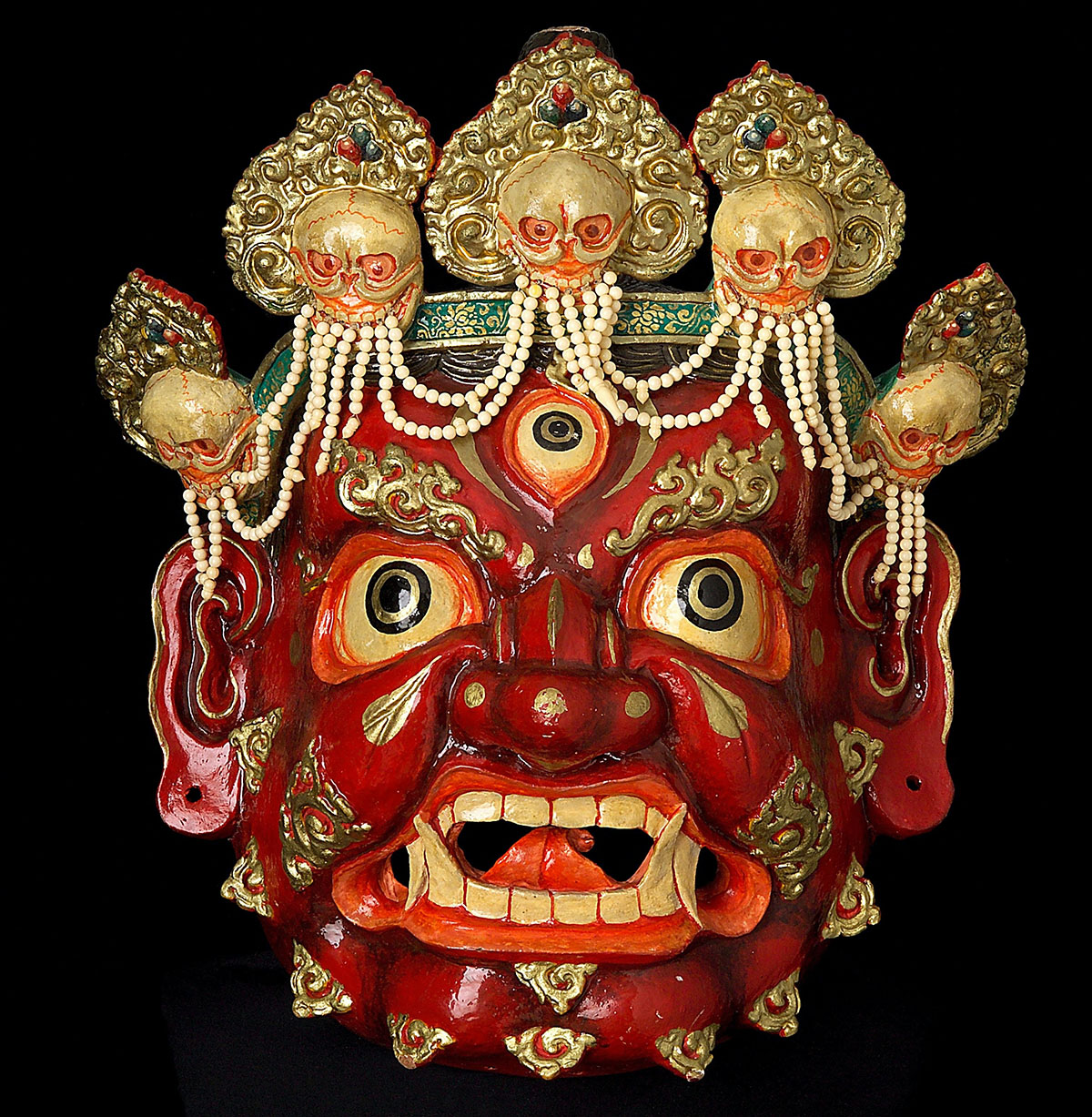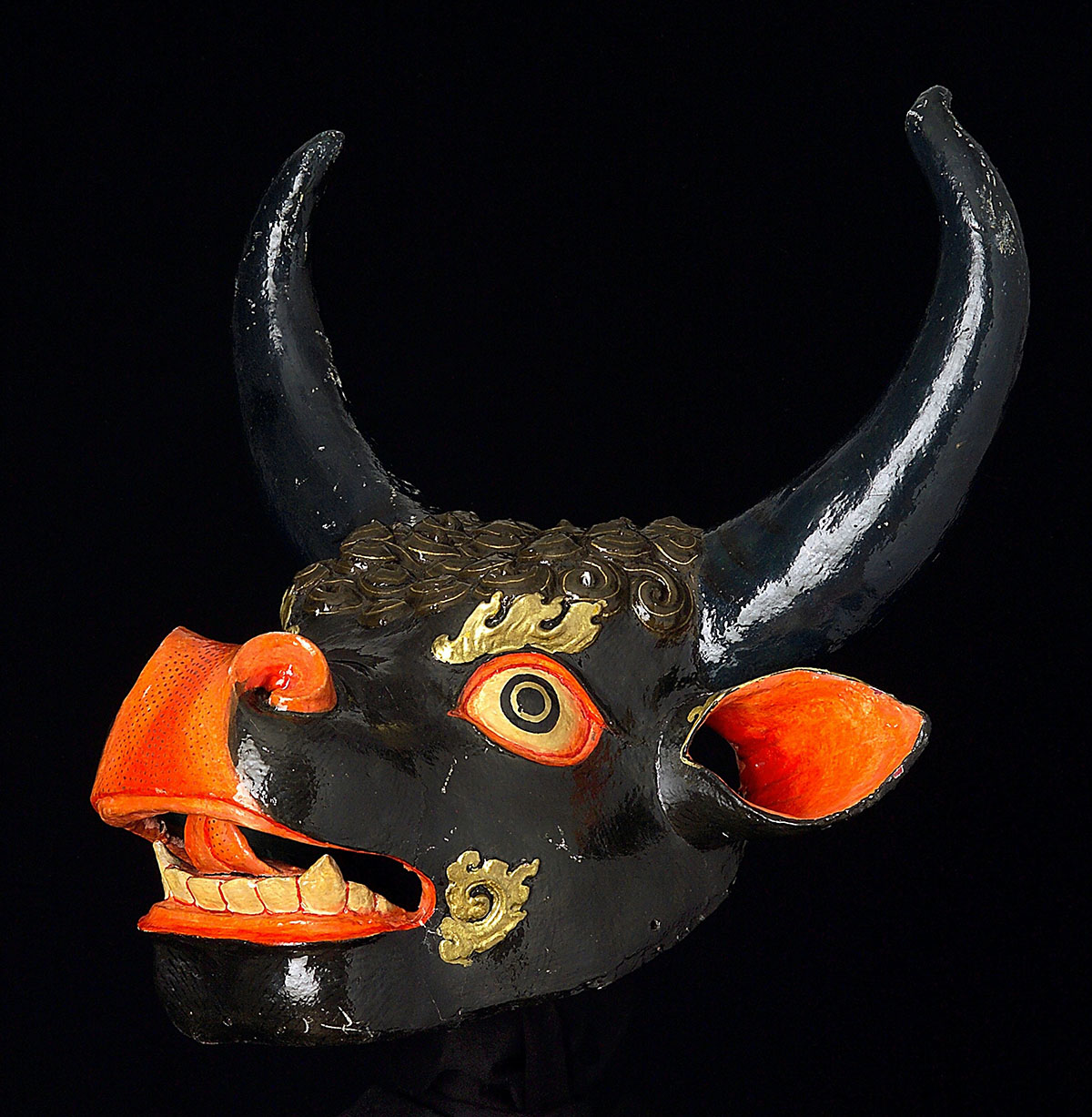ARTICLE
Cham Masks
Worn by practitioners of the cham dance in Bhutan, Nepal and India, cham masks are symbolic and ritualistic objects in Vajrayana Buddhism. These masks are believed to embody wrathful, protective deities and inspire fear and terror in the hearts of evil forces. These deities are also believed to remove obstacles in the path to enlightenment, and thus the masks are held to provide calm and tranquillity to the devotee and free them from the delusions of the material world. In the early twentieth century, European anthropologists termed these masks “devil masks” and used “devil dance” to refer to the cham performance.
Both cham masks and the cham dance are associated with legends of the Tibetan guru Padmasambhava. Though there is some evidence of masks being used in ritual dances in Tibet from the seventh century CE, the masks used in cham today are believed to have been revealed to a guru in a dream by Padmasambhava in the thirteenth century CE. Some cham masks have been preserved in monasteries over generations and have become venerated in their own right, attracting pilgrims and worshippers to witness them being used in performances. Masks are also used for the non-ritualistic Yungdrung Shon Dance, which generally takes place as part of cham festivals today.
Cham masks are made according to precise instructions from a variety of Buddhist scriptures and may have various regional variations. One manufacturing method involves preparing a clay mould and applying several layers of cloth to it using a mixture of glue and dry soil. They are then left to dry in the sunlight. When the glue has dried, the clay mould is removed and the surface of the mask is painted or decorated as required. Papier-mâché, metal and cotton strips may also be used to make the masks, especially in the case of animal masks, like those representing the Tibetan snow lion. Some masks may have marks around the mouth signifying leftover food or saliva, or the remnants of gorging on flesh, blood and intestines. Others, such as the shin yong (“protectors of the grave” in Tibetan) may consist of an elaborately decorated representation of a skull. The faces of wrathful deities such as Chogyel Yum, associated with Chamunda, may be surmounted by diadems featuring up to five human skulls. Each represents a negative affliction such as ignorance, jealousy, pride, attachment and anger, which are believed to be transformed by the dance into the positive virtues of wisdom, accomplishment, commonality, appreciation and understanding.
Cham masks are usually very heavy and large, making it difficult to see through them or wear them for long periods of time. Due to their weight and sharp edges, dancers wear padded caps or folded towels covering the forehead or the sides of the face in order to prevent chafing and cuts.
The masks are deeply associated with the philosophy of Vajrayana Buddhism. Tibetan scholars have suggested that they have layers of meaning: they may symbolise supernatural forces that are present both within the self and in the external world; the masks may refer to the illusory nature of the self; and their terrifying visages may be an allusion to the nature of the material world that masks the ultimate reality. The symbolism of these masks has also led the cham dance to be called the mystery play, the secret dance or the magic dance.
Many traditional construction methods for cham masks are preserved only in oral histories today, owing to the destruction of texts during the Chinese invasion of Tibet in the twentieth century. In addition to South Asia, some historic cham masks are preserved in monasteries as far away as Mongolia.
Bibliography
Our website is currently undergoing maintenance and re-design, due to which we have had to take down some of our bibliographies. While these will be re-published shortly, you can request references for specific articles by writing to hellomapacademy@map-india.org.








